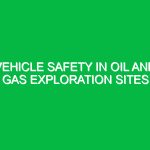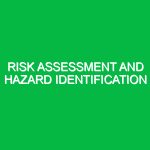Introduction
In the complex and high-stakes world of oil and gas, the need for robust Safety Management Systems (SMS) is paramount. SMS serves as a structured approach to managing safety, emphasizing the importance of Health, Safety, and Environment (HSE) protocols. These systems are not just regulatory necessities; they are essential for safeguarding lives, protecting the environment, and ensuring operational efficiency. By integrating powerful tools, techniques, and best practices, SMS can significantly mitigate the myriad risks associated with oil and gas projects.
Imagine an offshore drilling platform, where the stakes are incredibly high—one small oversight can lead to catastrophic results. In this environment, Safety Management Systems become the backbone of operational integrity, guiding teams through potential hazards and ensuring compliance with industry standards. This article delves deep into the intricacies of Safety Management Systems for Oil and Gas Projects, exploring their relevance, associated risks, best practices, and regulatory frameworks.
The Relevance of Safety Management Systems in the HSE Domain
Safety Management Systems for Oil and Gas Projects play a critical role in the HSE domain. They provide a comprehensive framework that organizations can use to identify, assess, and manage risks. This systematic approach not only enhances safety culture within the organization but also fosters accountability at all levels, from executives to field workers.
An effective SMS integrates various components, including risk assessment, incident reporting, training, and emergency response planning. The relevance of these systems is underscored by the fact that the oil and gas industry has historically faced significant challenges in managing safety, often leading to accidents with dire consequences. For instance, the Deepwater Horizon oil spill in 2010 serves as a stark reminder of what can happen when safety protocols fail. Such incidents highlight the necessity of implementing rigorous Safety Management Systems that are both proactive and reactive.
Identifying Hazards and Risks in Oil and Gas Projects
Understanding potential hazards is the first step toward effective risk management. Oil and gas projects are inherently risky, with numerous hazards that can jeopardize safety. Here are the primary categories of hazards associated with these projects:
1. Physical Hazards
Physical hazards include equipment malfunctions, slips, trips, and falls, as well as exposure to high-pressure systems. For example, a malfunctioning blowout preventer can lead to uncontrolled releases of oil or gas, posing severe risks to personnel and the environment. Identifying such risks requires regular maintenance checks and rigorous training for employees to recognize and respond to equipment failures.
2. Chemical Hazards
The oil and gas industry deals with various toxic substances, from crude oil to drilling fluids. Exposure to these chemicals can lead to serious health issues, such as respiratory problems or skin irritations. A notable example is the exposure of workers to hydrogen sulfide (H2S), a highly toxic gas that can be fatal. Implementing stringent protocols for handling and transporting these substances is crucial.
3. Environmental Hazards
Environmental hazards encompass leaks, spills, and emissions that can severely impact ecosystems. For instance, an oil spill can devastate marine life and contaminate water sources. The environmental impact of such incidents is profound and often irreversible, making proactive measures essential in minimizing the risk of spills through effective containment strategies.
4. Human Factors
Human error remains one of the most significant risks in oil and gas operations. Miscommunication, fatigue, and inadequate training can lead to accidents. For example, the Exxon Valdez oil spill in 1989 was largely attributed to crew fatigue and operational oversight. Therefore, fostering a culture of safety and ensuring continuous training are vital components of an effective SMS.
Best Practices and Safety Precautions
To effectively manage the risks associated with oil and gas projects, organizations should adopt best practices that align with their Safety Management Systems. Here are some actionable strategies:
1. Comprehensive Risk Assessments
Conducting thorough risk assessments is crucial. Organizations should regularly evaluate their operations to identify potential hazards, assess the level of risk, and implement appropriate controls. Utilizing tools such as Hazard Identification (HAZID) and Risk Assessment (RA) can facilitate this process.
2. Regular Training and Drills
Training is the cornerstone of an effective SMS. Staff must be well-versed in safety protocols, emergency response procedures, and equipment handling. Regular drills simulating emergency scenarios can ensure that teams are prepared to act swiftly and efficiently when real incidents occur.
3. Incident Reporting and Investigation
Establishing a culture of transparency regarding incident reporting is vital. Organizations should encourage employees to report near misses and unsafe conditions without fear of retribution. Investigating these incidents thoroughly can help identify root causes and prevent future occurrences.
4. Emergency Response Planning
An effective SMS must include a robust emergency response plan. This plan should outline clear procedures for various emergency scenarios, ensuring that all personnel understand their roles and responsibilities. Regularly reviewing and updating this plan is essential to incorporate lessons learned from past incidents.
5. Continuous Improvement
Safety is not a one-time effort; it requires ongoing commitment and improvement. Organizations should establish mechanisms for auditing and reviewing their SMS regularly. This continuous improvement approach helps identify weaknesses in the system and enhances overall safety performance.
Regulatory Framework for Safety Management Systems
Numerous regulations and standards govern Safety Management Systems for Oil and Gas Projects. These frameworks are designed to ensure that organizations prioritize safety and adhere to best practices.
1. International Standards
The International Organization for Standardization (ISO) has developed standards such as ISO 45001, which focuses on occupational health and safety. This standard provides a framework for organizations to manage risks and improve their safety performance systematically.
2. Industry-Specific Regulations
In addition to international standards, various national and regional regulations apply to the oil and gas sector. For example, in the United States, the Occupational Safety and Health Administration (OSHA) enforces regulations aimed at ensuring safe working conditions in the industry. Compliance with these regulations is not optional; it is a legal requirement that organizations must prioritize.
Conclusion
Safety Management Systems for Oil and Gas Projects are indispensable tools in the HSE domain, enabling organizations to manage risks and foster a culture of safety. By identifying potential hazards, implementing best practices, and adhering to regulatory standards, companies can significantly reduce the likelihood of accidents and protect their employees, the environment, and their reputation.
As the industry continues to evolve, so too must the approach to safety management. Embracing innovation, investing in training, and committing to continuous improvement will pave the way for a safer future in oil and gas operations. Remember, in this high-stakes field, proactive safety management isn’t just a requirement; it’s a responsibility that every stakeholder must shoulder.


